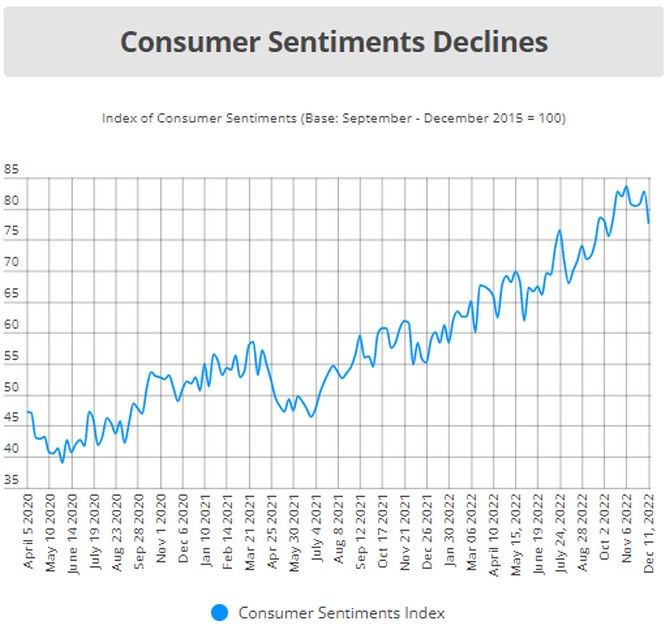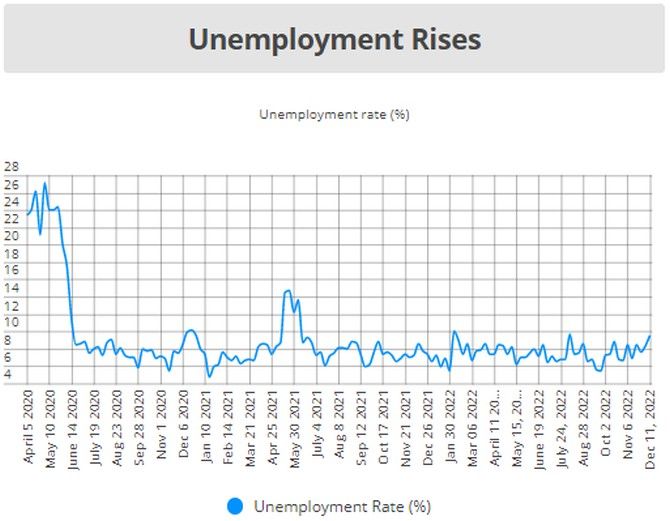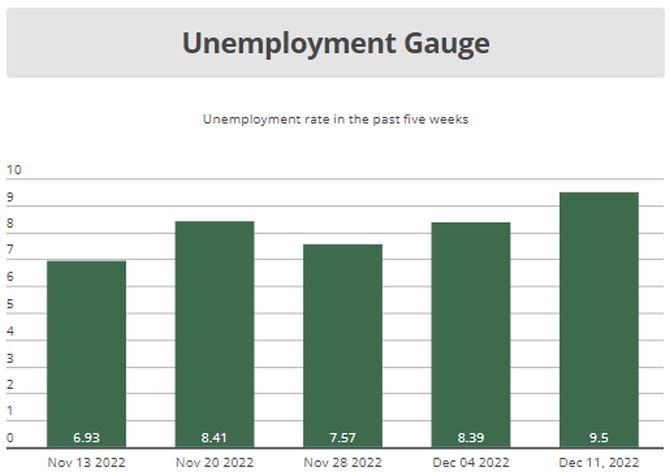Average wages paid by listed companies is more than twice the salaries paid by other enterprises, points out Mahesh Vyas.

Listed companies had employed a record 10 million employees in 2021-2022.
Wages paid by listed companies to these employees was of the order of Rs 700,000 per employee.
This is much higher than the average salary received by factory employees, which is close to Rs 300,000 or the average wages received by all salaried employees employed by listed/unlisted or big or small enterprises according to CMIE's Consumer Pyramids Household Survey, which was Rs 263,000 during 2021-2022.
Average wages paid by listed companies is more than twice the salaries paid by other enterprises.
Listed companies are the bigger enterprises.
These companies are bigger, on average, than the average ASI factory or the enterprises that the much larger set of enterprises in which the CPHS sample of household members are employed.
Consumer Pyramids Household Survey is a household survey. It does not contain information on the enterprises in which the household members are employed.
Therefore, it is not possible to link wage rates to size of enterprises or employers.
Nevertheless, it is possible to deduce that, prima facie, larger enterprises employ more people and make larger wage payments per employee than smaller enterprises.
We can check this somewhat rigorously within the set of listed companies for which information is available.
We find that the average wages paid by an enterprises rises as the size of the company increases.
Using a set of around 3,300 listed companies for which data was available for 2021-2022, we create ten sets of companies by the size of the company.
The top decile of companies is the largest ten per cent companies.
These are deciles by size, where size of a company is defined by its relative position in a ranking of companies by their three-year average of the sum of sales and fixed assets.
Companies of the top decile had an average annual wage rate of Rs.1 million per employee.
Happily, over one third of all persons employed in listed companies were employed in this group.
The second decile that accounted for another 15 per cent of the total employees of listed companies had an average wage rate of Rs 736,536 in 2021-2022.
The second decile therefore had an average annual wage rate that was substantially lower than the wage rate in the first decile.
Nevertheless, this implies that the distribution of wages in listed companies is such that the top 20 per cent of companies account for about half of the total employment. And, given that the average wage rate is around Rs 700,000 per employee per person, they pay well above the average wage rate paid by all listed companies.
The larger companies hire more people and they pay more on average than the rest.
The long tail of 80 per cent of the companies employs less than half of the total employment and pay lower wages.
The wage rate drops to Rs 550,000 in the third decile.
Then it rises to Rs 668,000 in the fourth decile and further to Rs 775,000 in the fifth decile.
In the next three deciles, the annual wage rate is around Rs 500,000 to Rs 650,000.
Then, in the smallest two deciles, the wage rate falls sharply to Rs 300,000 to Rs 375,000 per annum.
The mid-sized bins – deciles 3 to 8 have an annual wage rate in the range of Rs 500,000 to Rs 775,000.
This is much lower than the average wage in the top two deciles and is much higher than in bottom two deciles.
Broadly, it is evident that the wage rate is directly proportionate to the size of the company.
Apparently, it would thus be much better if India has many more larger companies than small-sized companies.
It is not possible to generalise this inference drawn from listed companies to all enterprises because of lack of data.
According to the Sixth Economic Census of 2013-2014, there were 58 million establishments that employed 131 million persons.
Of these, 42 million were own-account establishments and only 16 million establishments employed at least one hired worker.
73 million workers were engaged by these establishments.
This 73 million estimate provides an order of magnitude of the salaried employees in the economy, in 2013-2014.
According to CMIE's Consumer Pyramids Household Survey, there were 87 million salaried employees in 2019-2020.
This could be considered as an update of the estimate provided by the Economic Census of 2013-2014.
The COVID-19 shock led to the count of salaried employees falling to 74 million in 2020-2021. Then it recovered partly to 81 million in 2021-2022.
In contrast, employment in listed companies did not fall during the COVID-19 period.
In 2021-2022, while listed companies saw employment increase by 9.3 per cent, total employment of all salaried employees according to THE Consumer Pyramids Household Survey grew by a lower, 8.6 per cent.
Implicitly, employment in smaller/unlisted companies grew at a slower pace, although part of this growth was merely a recovery from a fall.
The Consumer Pyramids Household Survey database also shows that only six per cent of all the salaried employees in India in 2021-22 had an annual wage rate of more than Rs 600,000.
Further, only about 35 per cent had a wage rate of more than Rs 300,000.
This implies that about two-thirds of the total salaried employees in India have a wage rate that is lower than the wage rate offered by listed companies that offer the lowest rates.
Apparently, the solution to India's employment problem should be found in larger companies that are required to make copious disclosures rather than those in the medium and small scale sector that are poor users of labour.




Mahesh Vyas is MD & CEO, CMIE P Ltd, and you can read his earlier columns here.
Feature Presentation: Rajesh Alva/Rediff.com











